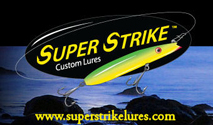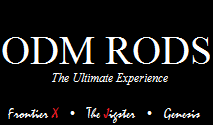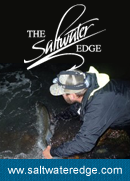Editor’s note
In a lot of ways, we consider anything Charles Witek has to say on fisheries management and conservation a “must read”. Charlie has recently started a blog at http://oneanglersvoyage.blogspot.com/
I hope many of you check it out and subscribe to be notified when Charlie posts his thoughts on this very difficult and often confusing subject. But in case you are too lazy to click it we will repost his blog right here. But I do urge you to subscribe to his feed on his blog
Zeno
****************************************************
ONE ANGLER’S VISION–FISHERIES MANAGEMENT: PART I THE MYTH OF “COMMUNITY”
TRCP’s “Vision” is a sort of Procrustes’ bed for the angling community. TRCP notes that
“The work to implement a national policy for recreational fishing will take a collective effort in which all segments of the recreational fishing community will need to come together and engage with fisheries managers, policymakers and other stakeholders to create a unified vision.”
That sounds pretty nice in a Kumbaya sort of way, but when TRCP took it upon itself to “set the foundation for a management system that addresses the needs of anglers and industry,” it assumed an impossible task.
That’s largely because, despite wishful thinking, no “recreational fishing community” truly exists; rather, there are a lot of discrete and often mutually hostile interest groups that are involved with recreational fishing. What is mother’s milk for one group is anathema to another. The folks who contributed to the “Vision” report have been involved in their share of internecine squabbles, and know that as well as I do.
As far as anglers go, there are fish hogs who kill everything that the law allows—plus a few more—and anglers who never keep fish at all. Most, including me, fall somewhere in between those extremes. And as far as the angling industry goes, there are those who cater to the pigs, those who cater to the catch-and-release folks and the majority who sell to anyone with a dollar to spare—which usually means catering to the least common denominator, because that way, their doors are open to all.
To get all of those folks under the same big tent, the “Vision” report must also take a least common denominator approach. It freely admits that conservation is important to anglers (the report makes 22 references to “conservation” in just 11 pages of text). But when it becomes time to put words into concrete recommendations, conservation concerns are subordinated to economic and allocation issues that require weaker fisheries laws.
Thus, the “Vision” will appeal to people who want to kill more fish, people who sell stuff to anglers who kill more fish and to people who run boats out to places where more fish can be killed. It probably won’t be so attractive to those who want to promptly restore distressed fisheries, who enjoy an abundance of fish or who want to leave healthy fisheries behind for their children.
I’m one of the latter sort, and TRCP’s vision certainly doesn’t resemble mine. But then, I’m probably never going to agree with headboat captains over in Sheepshead Bay, where enforcement folks can run out of summons books when they take on the poachers. Yet those captains are part of the “recreational fishing community,” and if TRCP wants them to share in the “unified vision,” some compromises must be made.
I worry about fish stocks collapsing. I have watched winter flounder, once the most abundant recreational fish in our bays, all but disappear. Representatives of the local marine trades, bait dealers and tackle shops freely acknowledge that there’s a problem—but oppose any concrete efforts to fix it, out of fears that their incomes could fall. Those folks are a part of the “recreational fishing community” too, and given TRCP’s emphasis on economics, a more important part of the “Vision” than my fellow anglers and I.
I’ve been involved with fisheries advocacy for a long time. I don’t get paid for it, and it’s more work than fun—if I ever quit, I’d have to start sticking pins in my eyes to keep up the pain—but I’ve been an angler for all of my life, and I feel an obligation to leave something good behind for the generations that follow. If there is anything that I’ve learned along the way, it is that the professed interests of fishermen and the fishing industry seldom coincide.
That doesn’t make intuitive sense, because fishermen are the industry’s customers, but it seems true just the same.
A decade ago, when I sat on the Mid-Atlantic Fisheries Management Council, the debate over summer flounder was reaching is rhetorical peak. The greatest opposition to needed rebuilding measures came from party boat operators and tackle dealers—members of the “recreational fishing community.” If they had their way, the spectacular recovery of the summer flounder, which led to the abundance and the size of the fluke we enjoy today, might never have happened. As an angler, do you share that “vision”?
Take that a step further. Many—probably most—of the captains and mates on the for-hire boats also hold commercial licenses. They’re more than happy to sell their passengers’ fish. Do you think that their “vision” is anything like yours?
There is a reason that the Magnuson Act contains different definitions for “charter fishing” and “recreational fishing.” The sectors’ interests and motivations just aren’t the same. If they can’t be included in the same definition, why should we think that they can be included in the same “Vision”?
Maybe I’m a little sensitive about this, but I’m a veteran of the various striped bass fights here in New York, when conservation-minded anglers repeatedly squared off against a profit-minded industry.
I was here during the moratorium, when some Montauk boats engaged in “civil disobedience,” publicly landing illegal bass, to protest regulations that impeded their business.
I was here the only time that legislation outlawing commercial bass harvest had even a slim chance of passage, when the Montauk Captains’ Association refused to support the bill, because—well, a lot of them sold fish.
I was here in ’95, when striped bass were declared to be “recovered,” and the Atlantic States Marine Fisheries Commission said that it was OK to take two 28-inch fish. New York’s striped bass anglers filled hearing rooms, asking that the state keep the old limits of one fish at 36 inches, while the for-hires and the tackle shops demanded two at 28. There was money to be made by turning a gamefish into a panfish that could replace disappearing fluke, tautog and flounder in their customers’ buckets, conservation considerations—and public opinion—be damned.
And I was here during the Amendment 6 debate, when the owner of a fishing website and magazine asked his readers whether they wanted harvest reduced, so that more big spawning females survived. Anglers strongly preferred conservation, and the site owner said so at an ASMFC hearing. Early the next morning, the shops and the boats initiated a boycott to punish him for representing anglers’ interests instead of theirs.
Based on such experience, when people talk about a “unified vision” of the “recreational fishing community,” I hear “the unified vision of the recreational fishing industry,” because the price that the industry imposes for “unity” is doing things their way—making sure that conservation never interferes with their business.
Which takes us back to TRCP’s “Vision”, and to this blog.
As I wrote at the beginning of this piece, TRCP’s “Vision” isn’t mine. However, it might be yours—that’s up to you to decide.
To decide, you need information, and that’s not easy to come by. Pretty soon, you’ll probably start reading a lot of articles hyping the “Vision” in the angling press. But you’re unlikely to find much thoughtful analysis, and you probably won’t see any criticism at all, because advertisers would never approve.
So, beginning with this post, and continuing for the next three weeks, I’m going to be analyzing aspects of the “Vision”. I’ll tell you what I think, and more importantly,why. You might think I’m right or you might think I’m wrong, but in many ways, that doesn’t matter.
What really matters is that you think—long and hard—about how people want to change the Magnuson Act, and whether making such changes is the right thing to do.
And when the time for thinking is done, I’m going to ask you to follow up and to act—to contact your Congressmen, your fishing clubs, your friends—and tell them exactly whatYOUR vision for fisheries management might be.
Because the industry doesn’t just have their “Vision.” They have their staff and their lobbyists and a friendly press at their beck and call.
But we anglers, particularly we anglers who care about rebuilding and conserving the fish we depend on, have no one but ourselves.
But there are a lot of us. And if we think and act and speak with the courage of our convictions, maybe—just maybe—that will be enough to win the day.
A NOTE ON THIS SERIES OF POSTS
I’ve touched on a number of fisheries management issues over the short life of this blog.
The “One Angler’s Vision” series of posts that began with this post may well be the most important thing that will ever appear here. There are about 11,000,000 salt water anglers in the United States, and right now, maybe two dozen people, representing a handful of business and fishing advocacy organizations, are getting ready to tell Congress and federal policymakers how the fish crucial to those 11 million anglers should be managed. They will try to shape policies that may well determine whether your children’s children ever see a winter flounder, catch a codfish or experience the diversity of a healthy southern reef.
The TRCP’s “Vision” represents those folks’ effort to shape the fishery management process. We can expect it to be rolled out in the press and at conferences, as its supporters try to create a bandwagon effect and win broad angler support. But anglers should know what they’re supporting before they jump on that wagon.
So I’m writing this series, which reflects my own vision for the management process, to provide anglers an alternative to the stories they’ll read in an industry-friendly press.
If you believe that it’s important for anglers to hear what I have to say, and if you think that this blog is worthwhile, I ask you to forward it to your fishing friends, and to anyone else who you might think is interested. Mention it in a club newsletter, or post it on a Facebook page. Just try to get out the word, and ask others to do the same, before the coming hype makes folks deaf to others’ voices.
Maybe my vision is wrong, and TRCP got it right. Maybe it’s the other way around.
But either way, anglers should decide for themselves, and not let a handful of industry folks and a few of their friends make the decision for them.
In case you’re interested, the whole series will look like this:
Part I: The Myth of “Community”
Part II: Managing for Abundance
Part III: Groundfish and Gamefish
Part IV: South vs. North
Part V: The “Cooperation” Con
Part VI: A Time for Visionaries
I hope that you read them and pass on the word. And that you find them worthwhile.












Charles always speaks in a rational, fair and above all, well informed manner. I rely on the information he provides to form an opinion of my own. Thank you Charles
↓very interesting, we must make a stand as fisherman for fisherman of the future.Thank You
↓Charlie is very knowledgeable and always seems to speak (write) in a calm manner. I agree with what he is trying to tell everyone. My own personal feelings are that if we do not act on The Striped Bass Issue now, we will not have any bass in a few years.
Vito
↓I look forward to the continuation of this writing. This is a genuine person who is weighing both sides, disclosing the facts as he sees them, with no rancor or pomposity, giving a person a basis to form an opinion. Thank you for bringing this forward for us to dwell upon. Rich
↓good work
↓Looking forward to more of Charlie’s insight.
Thank you Charlie and Zeno
Fred
↓Great addition to the blog Zeno – thanks. There are so many factors and influences that go into fisheries management that it is a treat to find writing that helps you to navigate through all the noise.
Any thoughts about having a running column on conservation and fisheries management in the magazine?
↓